The Pantheon is a former Roman temple, now a church, in Rome, Italy, on the site of an earlier temple commissioned by Marcus Agrippa during the reign of Augustus (27 BC – 14 AD). It was completed by the emperor Hadrian and probably dedicated about 126 AD. Its date of construction is uncertain, because Hadrian chose not to inscribe the new temple but rather to retain the inscription of Agrippa's older temple, which had burned down.
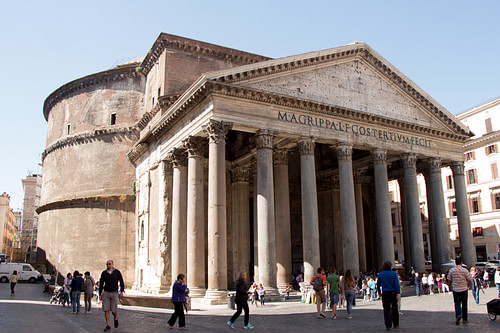
The building is cylindrical with a portico of large granite Corinthian columns (eight in the first rank and two groups of four behind) under a pediment. A rectangular vestibule links the porch to the rotunda, which is under a coffered concrete dome, with a central opening (oculus) to the sky. Almost two thousand years after it was built, the Pantheon's dome is still unreinforced. The height to the oculus and the diameter of the interior circle are the same, 43 metres (142 ft).
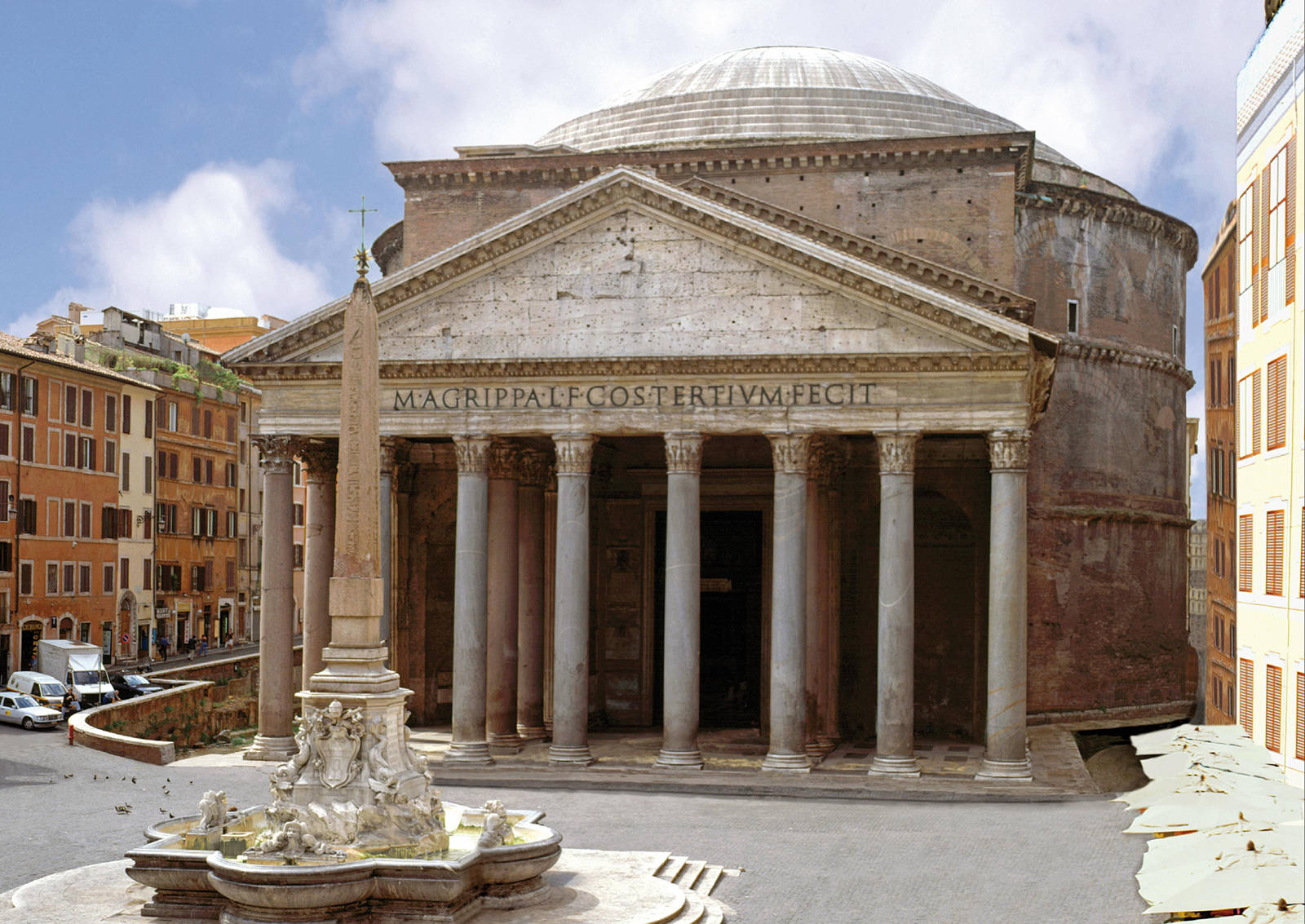
It is one of the best-preserved of all Ancient Roman buildings, in large part because it has been in continuous use throughout its history and, since the 7th century, the Pantheon has been in use as a church dedicated to "St. Mary and the Martyrs" (Latin: Sancta Maria ad Martyres) but informally known as "Santa Maria Rotonda". The square in front of the Pantheon is called Piazza della Rotonda. The Pantheon is a state property, managed by Italy's Ministry of Cultural Heritage and Activities and Tourism through the Polo Museale del Lazio; in 2013 it was visited by over 6 million people.
Portico
The building was originally approached by a flight of steps. Later construction raised the level of the ground leading to the portico, eliminating these steps.
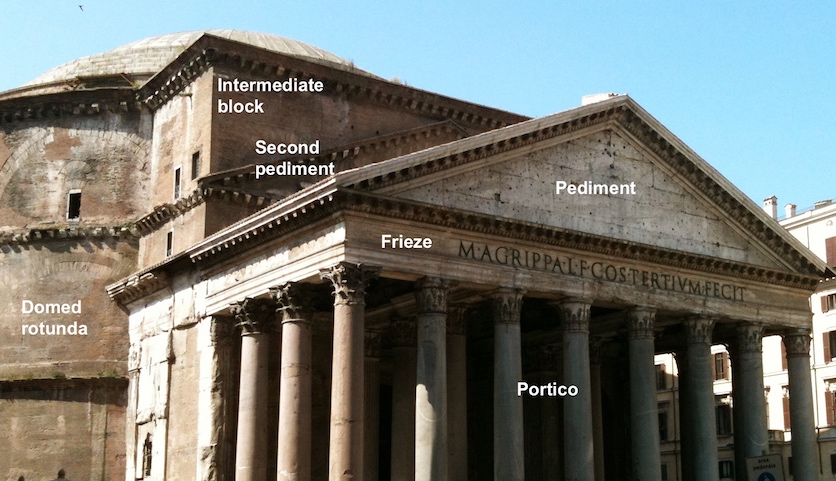
The pediment was decorated with relief sculpture, probably of gilded bronze. Holes marking the location of clamps that held the sculpture suggest that its design was likely an eagle within a wreath; ribbons extended from the wreath into the corners of the pediment.
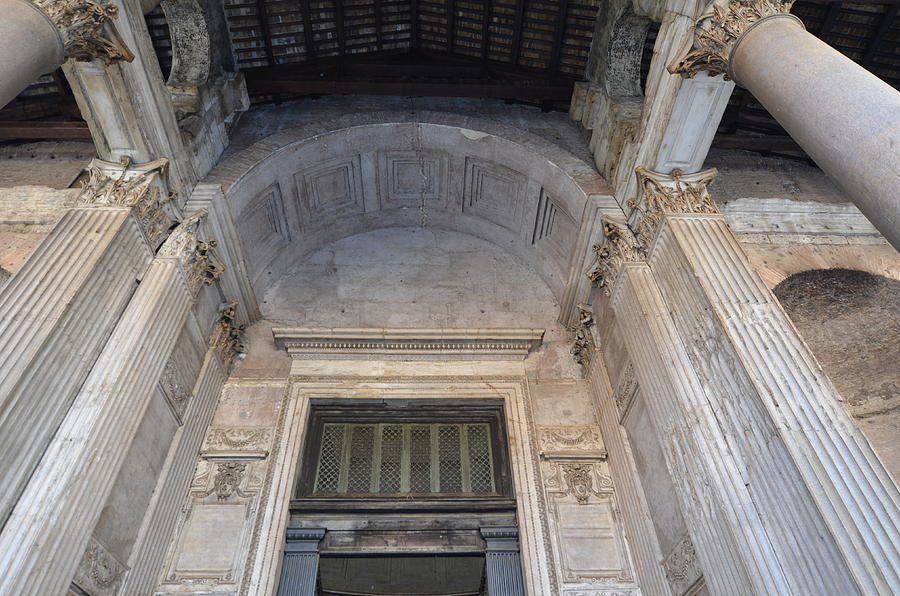
In the walls at the back of the Pantheon's portico are two huge niches, perhaps intended for statues of Augustus Caesar and Agrippa. The large bronze doors to the cella, once plated with gold, are not the original ones of the Pantheon. The current doors – manufactured too small for the door frames – have been there since about the 15th century.
Room with the Dome
The 4,535-tonne weight of the Roman concrete dome is concentrated on a ring of voussoirs 9.1 metres (30 ft) in diameter that form the oculus, while the downward thrust of the dome is carried by eight barrel vaults in the 6.4-metre-thick (21 ft) drum wall into eight piers. The thickness of the dome varies from 6.4 metres (21 ft) at the base of the dome to 1.2 metres (3.9 ft) around the oculus. The materials used in the concrete of the dome also varies. At its thickest point, the aggregate is travertine, then terracotta tiles, then at the very top, tufa and pumice, both porous light stones. At the very top, where the dome would be at its weakest and vulnerable to collapse, the oculus actually lightens the load.

The stresses in the dome were found to be substantially reduced by the use of successively less dense aggregate stones, such as small pots or pieces of pumice, in higher layers of the dome. Mark and Hutchison estimated that, if normal weight concrete had been used throughout, the stresses in the arch would have been some 80% greater. Hidden chambers engineered within the rotunda form a sophisticated structural system. This reduced the weight of the roof, as did the elimination of the apex by means of the oculus.

The top of the rotunda wall features a series of brick relieving arches, visible on the outside and built into the mass of the brickwork. The Pantheon is full of such devices – for example, there are relieving arches over the recesses inside – but all these arches were hidden by marble facing on the interior and possibly by stone revetment or stucco on the exterior. Though often drawn as a free-standing building, there was a building at its rear which abutted it. While this building helped buttress the rotunda, there was no interior passage from one to the other.
Interior
Upon entry, visitors are greeted by an enormous rounded room covered by the dome. The oculus at the top of the dome was never covered, allowing rainfall through the ceiling and onto the floor. Because of this, the interior floor is equipped with drains and has been built with an incline of about 30 centimetres (12 in) to promote water run off.
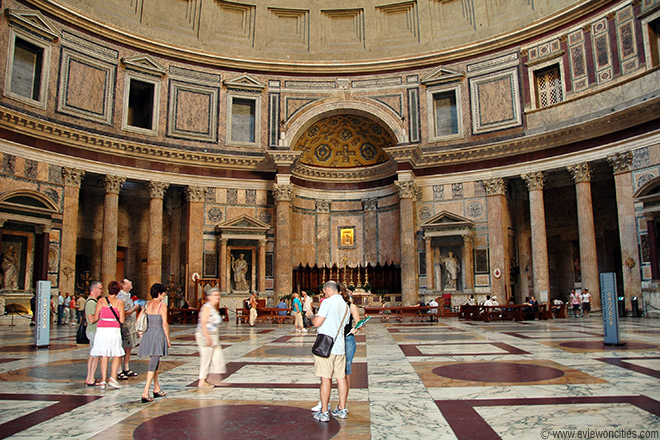
The interior of the dome was possibly intended to symbolize the arched vault of the heavens. The oculus at the dome's apex and the entry door are the only natural sources of light in the interior. Throughout the day, the light from the oculus moves around this space in a reverse sundial effect. The oculus also serves as a cooling and ventilation method. During storms, a drainage system below the floor handles the rain that falls through the oculus.
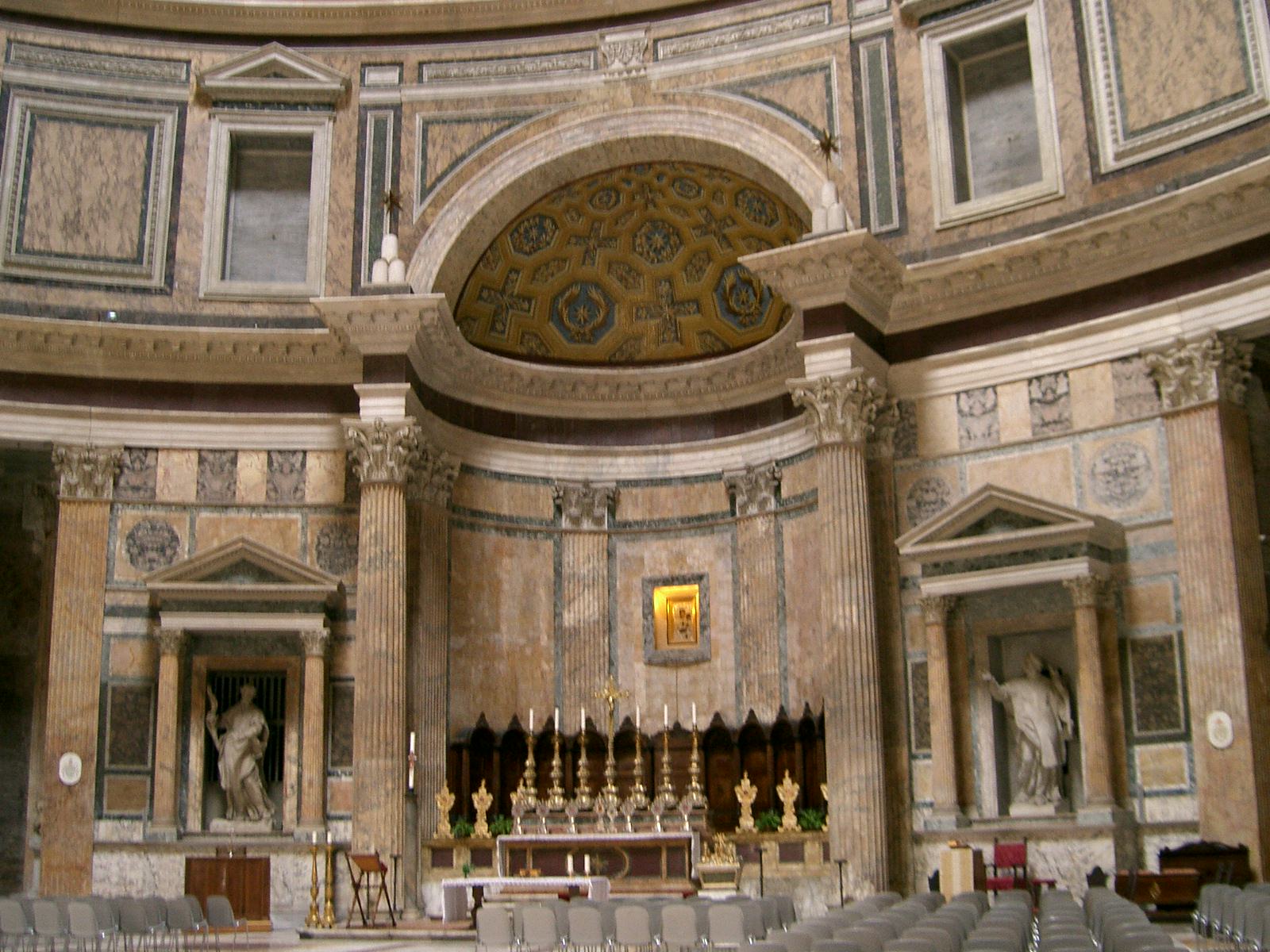
The dome features sunken panels (coffers), in five rings of 28. This evenly spaced layout was difficult to achieve and, it is presumed, had symbolic meaning, either numerical, geometric, or lunar. In antiquity, the coffers may have contained bronze rosettes symbolising the starry firmament.